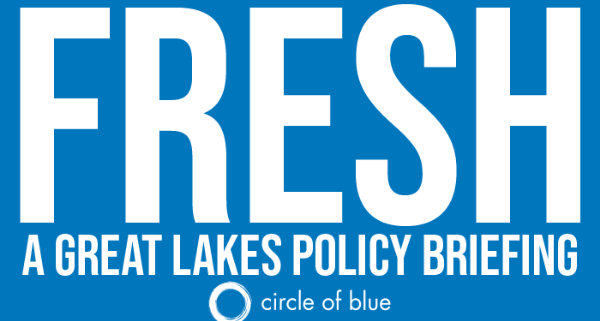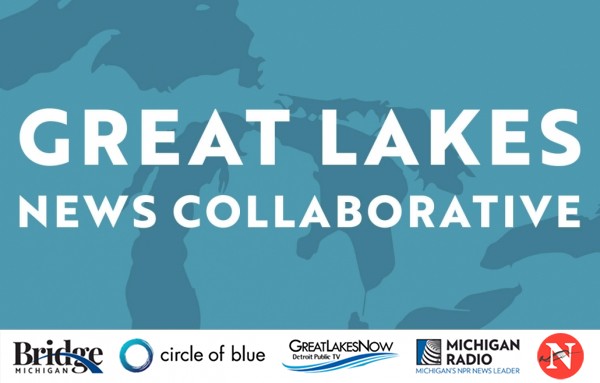Fresh, September 17, 2024: Controversial Policy Aims to Regulate Ballast Water, a Leading Cause of Invasive Species Spread, in Great Lakes Ports
September 17, 2024
Fresh is a biweekly newsletter from Circle of Blue that unpacks the biggest international, state, and local policy news stories facing the Great Lakes region today. Sign up for Fresh: A Great Lakes Policy Briefing, straight to your inbox, every other Tuesday.
— Christian Thorsberg, Interim Fresh Editor
This Week’s Watersheds
- According to a new study, harmful algal blooms and bacterial contamination in Lake Erie is costing the state of Ohio millions of dollars in lost tourism revenue.
- Ballast water regulation has become a point of contention between U.S. and Canadian shipping vessels traveling through the Great Lakes.
- A new report on the state of the St. Lawrence River shows its health — and the amount of oxygen in its waters — is in decline.
- The Wisconsin Supreme Court will hear a case on the spills law, which could result in major changes in state regulatory authority over hazardous substances like PFAS.
Thousands of acres of Caldwell First Nation land, vulnerable to flooding on Lake Erie’s shores, will be protected following a federally funded dike improvement.
“Protecting and stewarding lands and waters for the benefit of all beings, especially our citizens, is a priority for Caldwell First Nation.” — Caldwell First Nation Chief Mary Duckworth.
The Canadian government is investing more than $15 million to help protect Caldwell First Nation lands on the shores of Lake Erie, a region vulnerable to extreme weather and rainfall, Water Canada reports.
About 30 miles southeast of Detroit, what is today known as the Hillman Marshland — a conservation area on Lake Erie — is the traditional land of the Caldwell First Nation, who in their own language are known as Zaaga’iganniniwag, meaning “people of the lake,” according to both native-land.ca and CBC.
The area has been susceptible to flooding during heavy precipitation events. The marshland’s southern dike will be updated with federal funding, “safeguarding over 3,440 hectares of vulnerable land.”
Fresh from the Great Lakes News Collaborative
- ‘Above the poison’: Mohawk land defenders refuse to surrender Barnhart Island to New York — The Narwhal
- Plan to transform Saginaw Bay coal plant site could become model for closed plants across Midwest — Michigan Public
- PFAS Roundup: Four Great Lakes states selected to test residents annually for environmental chemical exposure — Great Lakes Now
- Palisades nuclear relaunch gets more subsidies in Michigan — and more backlash — Bridge Michigan
Bridge Michigan, Circle of Blue, Great Lakes Now at Detroit Public Television, Michigan Public and The Narwhal work together to report on the most pressing threats to the Great Lakes region’s water. This independent journalism is supported by the Charles Stewart Mott Foundation. Find all the work here.
Ballast Water Policy Hits Great Lakes Ports, Controversially
Ballast water — water that is taken in when cargo is loaded, transported great distances, and later released from freighters when unloading at ports — is estimated to be responsible for 40 percent of the non-native aquatic species introduced to the Great Lakes from transoceanic ships, WCMU Public Radio reports. These species, such as zebra mussels, cost the region an estimated $500 million each year for their damage to water quality, infrastructure, and native fish.
To address this issue, ships have been required to have ballast water management systems that ensure the water they release at ports is clean. But these regulations had only addressed freighters that come to the Great Lakes from outside the region — thousands of ships each year.
A regulatory blind spot has persisted, some say. The transport of ballast water still occurs on freighters which travel only within Great Lakes ports — ships called “lakers” — and this intra-lake movement is estimated to contribute to the spreading of 34 invasive species throughout the region.
A new Canadian rule which partly took effect last week aims to address the ballast water of ships that don’t leave the Great Lakes. Starting on September 8, just six American “lakers” were required to have ballast management systems. But by 2030, 50 other vessels — which are older — must be up to code. Those frustrated by the policy and the cost of updating old ships have called it a “regulatory embargo and blockade,” WCMU reports. They also say that it benefits many of the Canadian vessels, which are newer and smaller.
Meanwhile, researchers are fine-tuning ballast system technologies for the Great Lakes and studying the potential impacts of the new policy. “The only way to unpack the wild, wild west issue with the lakers is that we need to continue to fund that research,” Matt TenEyck, a researcher at the University of Wisconsin-Superior, told WCMU.
In the News
The Cost of Contamination: At the time of writing, the Ohio Department of Health lists four active advisories for Lake Erie beaches — a familiar occurrence in recent years, as harmful algal blooms and elevated E. coli levels make the water unsafe for human health. Now, a new analysis has offered a glimpse into the economic impacts of these closures. According to Brent Sohngen, an environmental economic professor at Ohio State University, beach closures in 2019 due to water quality warnings resulted in a 20 percent reduction of visitors and a loss of $22 million in tourism spending, WOUB Public Media reports.
State of the St. Lawrence: A new analysis, released jointly by the Canadian and Quebec governments, shows that the health of the St. Lawrence River “remains fragile,” CTV News reports. Of particular concern is the warming of the river’s seabed, which, in 2022, at depths greater than 300 yards, exceeded 44 degrees Fahrenheit for the first time on record. This warming is contributing to hypoxia – the loss of oxygen in the waters — a significant danger for fish and other aquatic organisms.
Looking Ahead
Spills Law: The Wisconsin Supreme Court has granted a petition filed by the state Department of Natural Resources, and will hear a case that could decide the department’s ability “to force businesses to clean up PFAS pollution under the state’s spills law,” Wisconsin Public Radio reports. The case stems from a 2021 controversy in which the DNR, under the Spills Law — which “requires anyone who causes, possesses or controls a hazardous substance that was discharged into the environment to take action to restore the affected air, land and waters” — forced a dry cleaner to address its PFAS pollution, without the state having PFAS pollution standards. The DNR was sued by Wisconsin Manufacturers and Commerce, and the agency’s authority has been in question ever since.
Upcoming Events
September 17-19 — Lakebed 2030 Conference — learn more
September 24-25 — Great Lakes Dredging Team 2024 Annual Meeting — learn more
September 25-26 — Great Lakes Drinking Water Conference — learn more
October 1-3 — Great Lakes Beach Association Conference — learn more
Other News
Lake Superior’s Endorsement: The X account of Lake Superior, famed for its big online personality, has endorsed Kamala Harris and Tim Walz in the upcoming presidential election.
Starry Stonewort: The Minnesota Department of Natural Resources has confirmed the invasive algae’s presence for the first time in the Whitefish Chain of Lakes, Minnesota Public Radio reports.
Christian Thorsberg is an environmental writer from Chicago. He is passionate about climate and cultural phenomena that often appear slow or invisible, and he examines these themes in his journalism, poetry, and fiction.









Sadly the the federal government of the United States main concern when establishing VIDA regulations, is protecting the economic interests of private shipping interest using antiquated vessels. These US vessels (Lakers)were built before the destruction caused to the Great Lakes by ballast water discharges was evident. Unfortunately the US has chosen not to establish a binational approach to preserve the Great Lakes. The US maritime association has even posted on the federal regulations, they are considering penalties, fines etc. if US Lakers not equipped with Ballast water management System do nor respect Canadian uptake regulations in Canadian Waters. The Canadians have reported successful results with Ballast Water Management Systems. They have stated that equipment result are getting better with experience of using BWMS. A binational approach to protect our Great Lakes could start now if our EPA would use an equipment standard for existing Lakers that match’s the Canadian effort requiring a BWMS installation on all Great Lakes vessels by 2030.